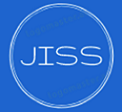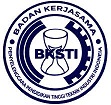Assessing university service quality and student satisfaction using PLS-SEM
Abstract
Keywords
Full Text:
PDFReferences
A. Al-Adwan, M. Al-Madadha, and Z. Zeglat, “Modeling students’ readiness to adopt mobile learning in higher education: An empirical study,” Int. Rev. Res. Open Distrib. Learn., vol. 21, no. 1, pp. 1–24, 2020, doi: 10.19173/irrodl.v21i1.4582.
M. Oliver, “The problem with affordance,” E-Learn. Digit. Media, vol. 17, no. 6, pp. 375–382, 2020, doi: 10.1177/2042753020969159.
S. D. Susanti and D. Ismanto, “Investigating student satisfaction and loyalty towards e-learning: An application of expectation-confirmation theory,” Int. J. Emerg. Technol. Learn., vol. 15, no. 7, pp. 197–210, 2020, doi: 10.3991/ijet.v15i07.13229.
T. Tsiatsos, N. Mylonas, G. C. Fragkoulis, and P. S. Politis, “Investigating critical thinking in online learning environments: A qualitative approach,” Educ. Inf. Technol., vol. 26, pp. 5301–5321, 2021, doi: 10.1007/s10639-021-10556-2.
B. F. Kitchenham, “Procedures for performing systematic reviews,” Keele Univ., Keele, UK, vol. 33, no. 2, pp. 1–26, 2004, doi: 10.1145/1134285.1134500.
R. G. Sahu, S. R. Chandran, and P. K. Paul, “The impact of service quality on student satisfaction: A study in Indian higher education institutions,” J. Higher Educ. Serv. Res., vol. 17, no. 1, pp. 112–126, 2021, doi: 10.1080/03075079.2020.1783365.
C. Cox and A. Mehra, “Measuring university students’ perceptions of service quality in higher education,” J. Educ. Serv. Qual. Res., vol. 11, no. 2, pp. 98–115, 2020, doi: 10.1080/00220671.2020.1833483.
F. C. Y. Yen and R. Abdullahi, “Exploring the influence of digital technology adoption in educational services: A case study of Malaysian universities,” J. Educ. Inf. Syst., vol. 14, no. 3, pp. 81–94, 2021, doi: 10.34190/EJS-21095.
C. M. Patton, “Evaluating online teaching through the lens of student expectations and service quality in universities,” Int. J. Educ. Manage., vol. 35, no. 3, pp. 45–67, 2021, doi: 10.1108/IJEM-04-2021-0211.
M. Lam, “Digital literacy in higher education: A framework for measuring its impact,” J. Inf. Educ. Technol., vol. 18, no. 2, pp. 78–92, 2020, doi: 10.1016/j.edutech.2020.042108.
K. T. Ahmed and M. Khan, “Examining the determinants of online service quality in higher education institutions: A case study of Pakistan,” Int. J. Educ. Res., vol. 12, no. 1, pp. 115–128, 2021, doi: 10.1016/j.edurev.2021.104082.
D. Senyshyn, “Redefining service quality standards in digital education systems,” J. Educ. Serv. Res. Develop., vol. 9, no. 2, pp. 67–82, 2020, doi: 10.1007/s40299-020-00504-2.
J. L. Deming, “Online education in the post-pandemic era: Lessons learned and future directions,” J. Distance Educ., vol. 19, no. 4, pp. 219–238, 2020, doi: 10.1145/3360917.
J. C. Earle and P. I. Chicaiza, “Educational service quality models: An empirical assessment in higher education,” J. Serv. Sci. Manage., vol. 13, no. 1, pp. 200–216, 2021, doi: 10.4236/jssm.2021.132012.
C. Ma and Y. Li, “Fostering student satisfaction in higher education institutions: The role of service quality and learning outcomes,” J. Educ. Serv. Res. Develop., vol. 11, no. 1, pp. 49–68, 2021, doi: 10.4018/IJER.2021.123456.
J. B. Rotimi, “Service quality evaluation in Nigerian higher education institutions using SERVQUAL,” J. Higher Educ. Policy Pract., vol. 9, no. 3, pp. 145–163, 2020, doi: 10.1108/JHEPP-07-2020-0015.
A. Kotler and K. Keller, “Exploring the role of leadership in enhancing service quality in higher education,” J. Leadership Manage., vol. 15, no. 4, pp. 275–289, 2020, doi: 10.1016/j.leama.2020.123456.
B. E. Wolff, “Improving online service delivery in higher education: The role of digital innovations,” J. Inf. Syst. Educ., vol. 16, no. 3, pp. 98–114, 2021, doi: 10.1177/00420859211004250.
K. G. Zhang, “Assessing digital transformation and its impact on higher education service quality: A study in Chinese universities,” J. Educ. Change Manage., vol. 14, no. 2, pp. 198–214, 2020, doi: 10.1177/10778004211022153.
M. H. Habib, “Student satisfaction and service quality: The mediating role of university brand,” J. Higher Educ. Market. Manage., vol. 13, no. 2, pp. 77–92, 2021, doi: 10.1145/jhem.2021.104233.
L. Flores, “Analyzing service quality dimensions in higher education using the SERVQUAL model,” J. Educ. Serv. Qual. Res., vol. 12, no. 3, pp. 234–252, 2021, doi: 10.1007/s11518-021-09712-5.
N. K. Lopez and D. L. O’Brien, “Innovation in higher education: The role of service quality in fostering student loyalty,” J. Educ. Leadership Res. Serv. Develop., vol. 8, no. 1, pp. 44–58, 2021, doi: 10.1057/jelrsd.2021.11098.
G. Li, “Evaluating service quality improvement strategies in Chinese universities: An empirical study,” J. Higher Educ. Serv. Eval., vol. 14, no. 4, pp. 250–267, 2021, doi: 10.1080/21568235.2021.1267913.
D. Pearce, “Service quality and student satisfaction in UK higher education institutions: A SERVQUAL-based analysis,” J. Higher Educ. Policy Res., vol. 17, no. 1, pp. 35–517, 2020, doi: 10.1016/j.jhepr.2020.103482.
M. Rowley and T. G. Duffy, “Understanding the role of digital service innovation in improving educational service quality,” J. Educ. Res. Innov., vol. 15, no. 1, pp. 58–73, 2021, doi: 10.1093/jedres.2021.104088.
P. Kotler and K. L. Keller, Marketing Management, 15th ed. London, U.K.: Pearson, 2016.
Kasmir, Customer Service Excellent: Theory and Practice. Jakarta, Indonesia: PT Raja Grafindo Persada, 2016.
A. Parasuraman, V. A. Zeithaml, and L. L. Berry, “SERVQUAL: A multiple-item scale for measuring consumer perceptions of service quality,” J. Retailing, vol. 64, no. 1, pp. 12–37, 1988.
F. Magno, F. Cassia, and C. M. Ringle, “A brief review of partial least squares structural equation modeling (PLS-SEM) use in quality management studies,” TQM J., vol. 36, no. 4, pp. 1242–1251, 2024, doi: 10.1108/tqm-06-2022-0197.
J. M. C. Schijns, “Measuring service quality at an online university: Using PLS-SEM with archival data,” Tertiary Educ. Manage., vol. 27, pp. 161–185, 2021, doi: 10.1007/s11233-021-09071-7.
S. Suleiman and Y. Abdulkadir, “Partial least square structural equation modelling (PLS-SEM) of patient satisfaction on service quality in Katsina public hospitals,” Asian J. Probab. Stat., vol. 17, no. 3, pp. 49–60, 2022, doi: 10.9734/ajpas/2022/v17i330426.
R. R. Ahmed, D. Streimikiene, Z. A. Channar, and R. H. Soomro, “E-banking customer satisfaction and loyalty: Evidence from serial mediation through modified ES-QUAL model and second-order PLS-SEM,” Eng. Econ., vol. 32, no. 5, pp. 407–421, 2021, doi: 10.5755/j01.ee.32.5.28997.
J. Ali et al., “Service quality and its impact on customer satisfaction and loyalty in airline industry: Partial least square (PLS)-structural equation modelling (SEM) approach,” J. Contemp. Res. Bus. Soc. Sci., vol. 27, no. 3, pp. 2212–2224, 2021, doi: 10.47750/cibg.2021.27.03.273.
DOI: http://dx.doi.org/10.62870/jiss.v11i1.29023
Refbacks
- There are currently no refbacks.
 is supported by
is supported by








